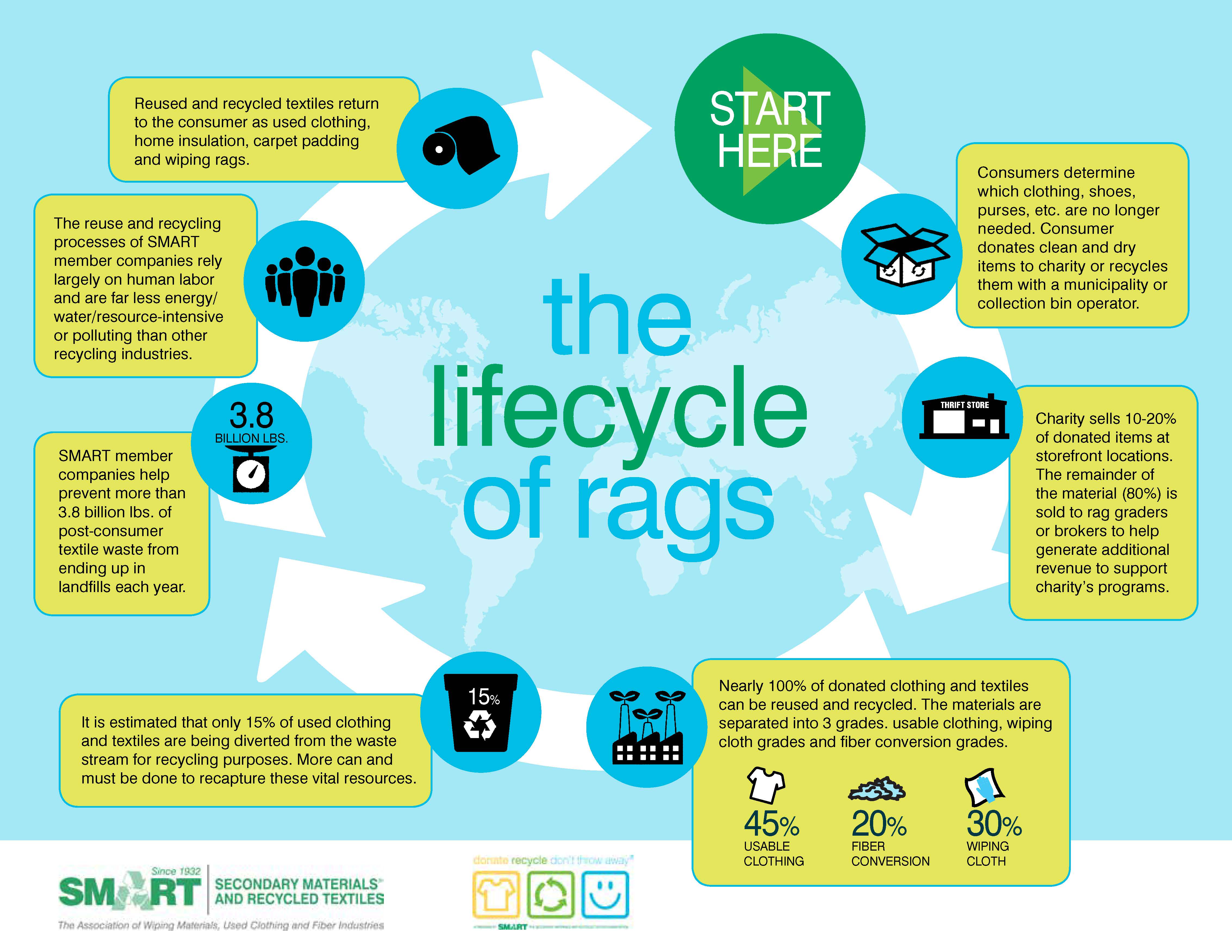
Textile recycling keeps billions of pounds of waste from landfills
For this year’s National America Recycles Day on November 15, don’t forget about the importance of reusing and recycling textiles. According to the Secondary Materials and Recycled Textiles Association (SMART), a global organization of companies involved in the reuse and recycling of textiles and related secondary materials, the average U.S.citizen throws away 81 pounds of clothing each year. Why does this matter?Ninety-five percent of textiles, even if they are worn out or torn, can be recycled – yet only 15 percent get donated/recycled, with 85 percent of used textiles ending up in landfills.
A common misconception about textile recycling is that the only option is to donate clothing that can be re-worn. In reality, donated textiles are given a “second life” in many ways. Nearly 100 percent of donated textiles are recycled into three grades: 45 percent usable clothing, 20 percent fiber conversion grade and 30 percent wiping cloth grade.That means 50 percent of donated textiles are not used as secondhand clothing –instead, they are transformed into items such as wiping cloths, pillow stuffing, household insulation, car seat stuffing and more.
Have you used a wet wipe at your favorite barbecue restaurant? It may have been created with recycled nonwoven textiles!This niche recycling industry takes “seconds” from mills producing “firsts”such as napkins and paper towels – for example, the trimmings from your carefully sized napkins, and repurposes them into a variety of wiping materials for janitorial companies, hygiene brands and more.
Any clothing, household textile or commercial linen textile, as long as it is dry and has no odor, can be reused and recycled. Even if the item is stained, torn, overly worn or out-of-date, do not throw it away; it has a use in the textile recycling industry. Only items that are wet (mildewed) or have been used with a solvent-type liquid (such as gasoline or Goof Off) cannot be recycled.
To find the closest SMART member near you to recycle your textiles and for more information on SMART, visit www.smartasn.org. Please direct media inquiries for SMART to Andrea Lynn at 410-420-2001 or by email at [email protected].
About SMART
Established in 1932, the Secondary Materials and Recycled Textiles Association (SMART) is an international nonprofit trade association that strengthens the economic opportunities of its diverse membership by promoting the interdependence of the for-profit textile recycling industry segments and providing a common forum for networking, education and trade. SMART members use and convert recycled and secondary materials from used clothing, commercial laundries and non-woven, off spec material, new mills ends and paper from around the world. SMART member companies create thousands of jobs worldwide, proving each day you can make money by being social responsible.
About Keep America Beautiful
At Keep America Beautiful, we want to ensure that beauty is our lasting signature. A leading national nonprofit, Keep America Beautiful inspires and educates people to take action every day to improve and beautify their community environment.We envision a country where every community is a clean, green, and beautiful place to live. Established in 1953, Keep America Beautiful provides the expertise, programs and resources to help people End Littering, Improve Recycling, and Beautify America’s Communities. The organization is driven by the work and passion of more than 600 community-based Keep America Beautiful affiliates, millions of volunteers, and the support of corporate partners,municipalities, elected officials, and individuals. To learn how you can donate or take action, visit kab.org. Follow us on Twitter and Instagram, like us on Facebook, or view us on YouTube.



